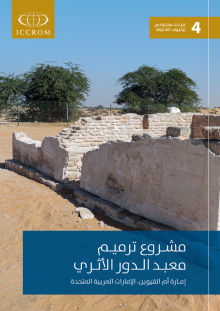
The Restoration Project of El-Dor Archaeological Temple in the Emirate of Um al-Quwain in the United Arab Emirates is a project characterized by two aspects. The first is the uniqueness of the temple in the Arabian Peninsula and therefore its archaeological value as a house of worship from the pre-Islamic period, which is still well preserved. The second is the method of intervention to preserve this monument, in which studies and implementation work have been carried out using a methodology that is consistent with international recommendations and conventions.
Restoration and conservation projects in different countries often tend to adhere to charters and employ appropriate approaches to preserve the authenticity and integrity of archaeological properties. However, the reality is that many of these projects face significant challenges and often fall short of their objectives due to lack of documentation, scientific and professional expertise, investment and administrative pressures, etc. Anyone interested in heritage and familiar with the literature of its preservation can face some difficult questions about conservation approaches, even when working on the most famous and important restoration projects carried out in major heritage sites.
Justifying the method of intervention on heritage is a responsibility in the decision-making process and management of the preservation work, and this responsibility is most challenging in the Gulf region, which has a recent exposure to the concepts of heritage preservation compared to European countries, for example where knowledge and expertise is gained through accumulated experience.
With the support of the Ministry of Infrastructure Development, ICCROM, through its Sharjah team and international and regional experts, has developed the conservation methodology from studying available documents, analyzing building materials, conducting field experiments and testing material compatibility and carrying out conservation work on site in cooperation with the Um al-Quwain Antiquities Department, training workers and developing a periodic maintenance program.
This book is an example for balancing real-world challenges and heritage conservation constraints by international conventions. It is aimed at project managers, as well as restorers working in laboratories or sites who are interested in learning about some of the scientific techniques and analyses used in the project which can be applied in similar projects. As a highly specialized field of expertise, the implementation of this project gave great attention to that the cultural value of the temple to be enhanced, by preserving the authenticity of the monument, in order to highlight the message and meanings of the historic place through actions aimed at raising the awareness of society and its significance.
